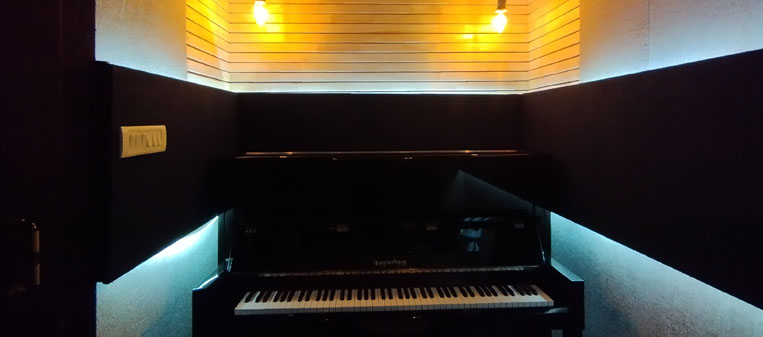Recording studios serve as the creative hubs for musicians, producers, and audio engineers to bring music and other audio content to life. Achieving exceptional sound quality in recordings is of utmost importance in the music and entertainment industry. While advanced recording equipment and talented professionals play crucial roles in the process, the significance of recording studio acoustics cannot be understated. Well-designed acoustics in a studio environment are essential for capturing clean, accurate, and immersive audio, elevating the overall quality of the final product.
1. Minimizing Unwanted Reflections:
Acoustic treatment in recording studios helps minimize unwanted reflections that can lead to echoes, reverberations, and phase cancellations. Echoes and reverberations can blur the original sound, compromising clarity and intelligibility. By using sound-absorbing materials on walls, ceilings, and floors, studios can control reflections and ensure that the sound captured by microphones remains faithful to the source.
2. Controlling Ambient Noise:
Recording studios situated in urban environments or high-traffic areas may be susceptible to external noise pollution. Acoustic treatment aids in controlling ambient noise, preventing unwanted sounds from seeping into the recordings. Soundproofing techniques, such as installing isolation booths or using specialized acoustic panels, can create a controlled and quiet environment, allowing artists to focus on their performances without distractions.
3. Accurate Monitoring and Mixing:
Studio acoustics play a pivotal role in providing accurate monitoring and mixing conditions. Properly treated studios reduce the impact of room resonances and standing waves, ensuring that what the engineers hear through their studio monitors is a faithful representation of the recorded material. This accuracy empowers engineers to make informed decisions during the mixing and mastering processes, resulting in a more polished and professional final product.
4. Maintaining Consistent Sound Quality:
Consistency in sound quality across different recording sessions is crucial for artists and producers working on albums or multi-track projects. An acoustically treated studio provides a stable and consistent environment, allowing for uniformity in sound recordings. This consistency ensures that tracks recorded on different days or with different equipment blend seamlessly, contributing to a coherent and cohesive end product.
5. Enhancing Creativity and Performance:
A well-designed acoustic environment can significantly impact artists’ creativity and performances. When artists feel comfortable and immersed in an acoustically pleasing space, they can focus on delivering their best performances. The absence of distracting resonances and reflections fosters a sense of connection between the artists and their music, resulting in more authentic and emotive recordings.
Recording studio acoustics are the foundation of exceptional sound quality in music and audio production. By addressing issues such as unwanted reflections, ambient noise, and room resonances, acoustically treated studios create an environment where accurate recordings and detailed mixing are possible. This attention to acoustics not only enhances the final product’s overall quality but also inspires creativity and elevates the artistic expression of musicians and performers. Ultimately, investing in recording studio acoustics is a fundamental step towards producing top-tier audio content in the ever-evolving landscape of the music and entertainment industry.

